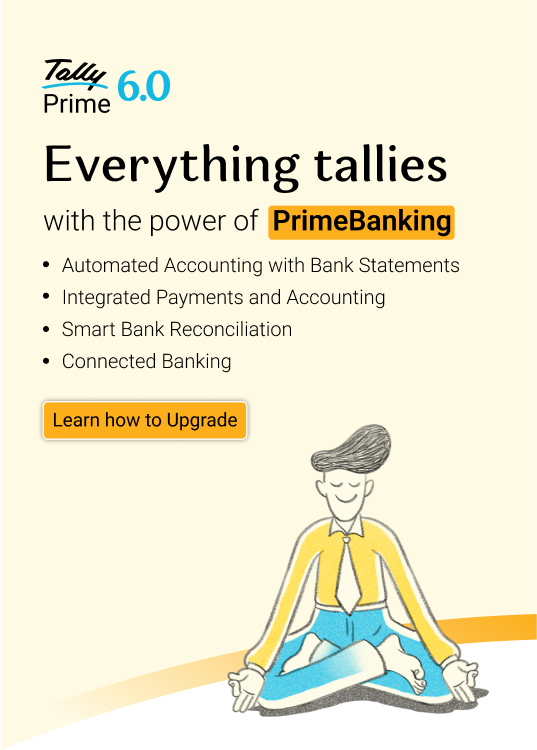Let’s say you’re a regular chaiwala (tea seller) in India’s capital city. Your secret recipe for adrakwali chai (ginger tea) is so unique that your customers swear by it. In other words, your tea stall is the locality’s hotspot. Your customers are happy, and so are you. But something changes when a food blogger stops by your stall and offers to give you a shout-out on Instagram.
Suddenly, you find yourself becoming an Instagram hero. People from all over the city (and beyond) start flocking to your chai shop for that special ginger tea. The footfall increases so dramatically that you start thinking about opening another stall.
That’s the power of partnerships and collaboration.
Now, imagine that instead of opening another stall, you partner with a local bakery that agrees to serve your chai alongside their samosas. For every cup of chai sold, you give them a percentage. It turns out to be a win-win for both businesses!
Today, we’ll break down how you, as a small business owner in India, can tap into the power of partnerships and affiliate marketing in India, without busting your budget (or your back).
Partnership marketing
This kind of collaboration involves two or more businesses. All partners work out a win-win strategy, where each one helps boost the other’s products or brand for greater visibility.
Popular examples:
- One of India’s very first co-branded credit cards involved ICICI Bank, Amazon India, and Visa. Amazon offered exclusive deals, such as discounts, while ICICI managed the back-end, and Visa provided the network infrastructure.
- The partnership between Spotify and Uber in the US, parts of Europe, and Asia allowed premium Spotify members to link their music listening to the Uber app. This personalisation during rides made the partnership a successful one.
Think of partnership as two co-actors in a movie who promote the movie and, in so doing, help each other.
Types of partnerships
There are several ways brands can collaborate. Some of the most common partnership formats include:
-
Influencer Tie-ups
Here, brands collaborate with micro- or nano-influencers who act as trusted local ambassadors. It’s essentially word-of-mouth publicity, powered by authenticity.
-
Strategic Co-branding
This involves aligning with a complementary brand. For instance, a yoga mat retailer could join forces with a wellness brand to sell a “Fitness Essentials” kit.
Finding the right partners: Swipe right for the perfect match
This is the most difficult part of the journey. Not every potential partner is your business soulmate. You need to be extra cautious.
Here’s how to pick the right one. Focus on these three crucial elements:
- Value alignment: Get in the nitty-gritty of the values of the brands that you wish to partner with. Find the answers to questions like - do they stand for the same things as your brand? Example - A sustainability-focused soap brand won’t want to team up with a plastic-heavy packaging company, right?
- Audience fit: What is the composition or demographics of your audience and your prospective partner’s audience? A health influencer’s audience may not be the perfect fit for a start-up brand that manufactures waffles and chips.
- Mutual benefit: So, the end objective of any collaboration is what each gains from the other. Will both sides gain something? If yes, what exactly? Are these proposed benefits in line with the brand's objectives? If not, it’s like dancing with someone who keeps stepping on your toes.
Affiliate marketing
Affiliate marketing typically involves a business and one or more individuals or entities that promote its products in exchange for a commission. The main crux of the partnership is performance-based. The affiliates promote your products and services and get a commission when a lead is generated or a purchase is completed.
For example: The Amazon Associates India Program. This is the official affiliate marketing program in India, where influencers or bloggers promote Amazon products and earn a commission based on the leads generated and purchases made.
Setting up your affiliate program: The DIY blueprint
Ready to roll out your affiliate program? Here’s your step-by-step guide:
- Choose your tools: Choose an affiliate marketing platform that fits your business. Look for platforms with a track record of success. Take recommendations from your peers and industry experts. Some examples include ShareASale, Cuelinks, and ClickBank.
- Set the commission: This is a significant step. It must be attractive enough for affiliates to feel motivated to promote your product. For example, in e-commerce, 10–20% per sale is common.
- Track everything: Today, if you cannot measure results, nothing is of use. Try dashboard tools that help you in real-time to see who’s bringing in what. Of course, tracking also means verification at every step.
Metrics to track
The following are some common metrics to monitor with your affiliate marketing efforts:
- Click-through rate (CTR): How many people are actually clicking on the affiliate links? Is there a discernable trend or pattern to identify?
- Conversion rate: Find out, of all those that clicked, how many actually bought something?
- Return on investment (ROI): This analysis reveals the return for every rupee spent.
Difference between partnership and affiliate marketing
The following are some key differences between the two types of collaborative marketing efforts:
|
Features |
Partnership |
Affiliate |
|
Type of relationship |
Collaborative |
Transactional |
|
Parties |
Two or more |
Usually two |
|
Goal |
Mutual brand growth |
Lead generation and sales |
|
Payment |
Collaborative |
Commission-based |
Benefits of collaborative marketing
These two marketing formats are extremely beneficial for small businesses. These are the upfront benefits:
- Increased reach: In these forms of collaborative marketing, partners can leverage one another’s audience and market reach to tap new markets. Since neither partner needs to start from scratch, all parties save considerably on their marketing expenses.
- Performance-based cost: In the case of affiliate marketing, payment to the affiliate is made only for performance or result. There are no half-baked promises here. The approach is simple - you deliver, you get paid.
- Credibility through associations - Since this involves promoting brands and relationships within your loyal audience, every partner gains from the brand trust each partner has already established with its audience.
Tip: Always sign a basic agreement before entering any affiliate or partnership deal.
Additional success stories
- Mamaearth’s rise as a giant among beauty and personal care brands can be largely attributed to its careful use of influencer and affiliate marketing networks. By collaborating with a wide range of digital creators (everyday mom bloggers and top-tier lifestyle influencers, both aligned in values), the brand crafted authentic, relatable narratives that resonated deeply with millennial and Gen Z audiences. These stories, usually centred around clean ingredients, sustainability, and personal experiences, helped build trust and emotional connections.
- boAt has emerged as one of India’s most recognisable audio and wearable tech startups over the past decade. A pillar of its marketing strategy is its savvy use of co-branding and celebrity partnerships, particularly within the sports and entertainment ecosystems. BoAt has forged high-visibility collaborations with IPL teams and youth icons, leveraging their popularity to create a cool, aspirational brand image. Suddenly, they’re a lifestyle brand (and not just a gadget manufacturer).
Wrapping up
If your brand or business is the best-kept secret in town, you might want to take the help of partnership and affiliate marketing strategies. From boosting brand awareness to reaching out to a wider market, there’s a lot that can be achieved. Consider both as types of friendships where every partner benefits.
The best way to go about things: start small and scale up when results begin to show.
If you’re still confused about the focus of your marketing efforts, visit Smart Moves by Tally for more helpful directives. We can help you build your business from the ground up.












